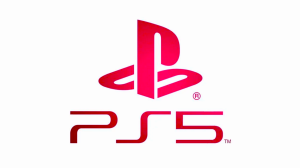Tim Burton’s 1989 Batman and its sequel, 1992’s Batman Returns, are seminal works of superhero cinema leaving an indelible mark on Batman’s mythology. The original film can rightly be regarded as one of the earliest dominoes to fall in the sequence of cinematic releases that would lead to today’s glut of superhero films. Both films also laid the groundwork for Batman: The Animated Series, which many still regard as the definitive Batman. But Warner Bros. took a different approach to later Batman films, embracing a lighter tone with Joel Schumacher at the helm. Almost 30 years later, DC Comics is picking up where Burton left off in the pages of Batman ’89 #1, a new series set in the same universe as those first two films and penned by their writer, Sam Hamm. With Joe Quinones providing stellar artwork, the issue proves to be a welcome return, though one that may be too rooted in the past in certain respects.
Videos by ComicBook.com
Quinones’ cover of the issue instantly sets the tone. Batman’s cape creates a shadow that blocks the blue-tinged light in the background and evoking the gothic darkness that characterized Burton’s films. The bold, chrome, black-and-gold Batman ’89 logo overhead instantly brings to mind the early 1990’s Batman aesthetic: still as cartoonishly over-the-top as the 1966 TV show, but embracing the pulpier elements of Batman’s earliest comics.
Inside, Quinones manages to infuse straightforward layouts with dynamic action ideally suited for the material while relying on colorist Leonardo Ito to add definition to the all-black Batsuit worn by Michael Keaton. Ito proves up to the task while, applying a cinematic approach, Quinones uses horizontal panels to encapsulate dramatic movements and framing, like Batman taking cover behind a moving giant penny. Where the objects on the page break out of the panels, it helps sell the escalation of action.
The Burton movies are set apart from their successors by how the production design characterized Gotham City as a nightmare version of urban decay run amok. Quinones employs a splash page to give readers that same sense, offering a view of the city square with a gnarled autumn tree at its center. It’s only a shame the issue doesn’t bask more in Gotham’s surreal tone.
Batman ’89 #1 kicks off an indeterminate amount of time after Batman Returns, and it picks up on ideas from that film. Penguin and Catwoman managed to turn the police against Batman through a series of sabotages and framings. Here, the rise of copycat criminals and increasing casualties and property damage in Batman’s war on crime has led district attorney Harvey Dent, modeled on Billy Dee Williams, to campaign for attorney general on an anti-Batman platform.
The issue foreshadows Dent’s transformation into Two-Face, with Quinones providing a shot that subtly bathes half of Dent’s face in shadow. Hamm roots Dent’s dual nature in his Blackness. He visits Burnside, Gotham’s predominantly Black neighborhood, and the kids view his expensive car and clothes in awe. Those same items earn only derision from Harvey’s older mentor, but Dent insists his affluent accoutrements are a costume worn to help him fit in with the Gotham elite. He also insists it doesn’t hurt to give the kids a role model who isn’t a sports star or drug dealer.
There’s some exciting potential in this direction for Two-Face. He could be used to examine concepts like code-switching or respectability politics. Similarly, the idea of a Black Robin—introduced in this issue in homage to Marlon Wayans, who was to play the character in the ill-fated third Burton movie—from a different economic background than Bruce Wayne has merit. I’m intrigued, though the framing may rely too heavily on dated ideas about race from the era that gives this series its name. While I’m interested to see where it goes, I can’t help but feel a little trepidation at it being a story focused on two Black characters’ experience without any Black creators involved.
Burton’s Batman movies blended gangster fiction, pop art, and the director’s fondness for gothic outsiders to great success. Batman ’89 #1 leans heavily on the first element. There remains every reason to believe that creators with such apparent connections and reverence for the source material will embrace the other pieces as the story progresses and Harvey undergoes his villainous transformation. The essence of those Batman movies is present here, and this issue will allow those who always wanted more of them to revel in the continued saga.
Published by DC Comics
On August 10, 2021
Written by Sam Hamm
Art by Joe Quinones
Colors by Leonardo Ito
Letters by Clayton Cowles
Cover by Joe Quinones









